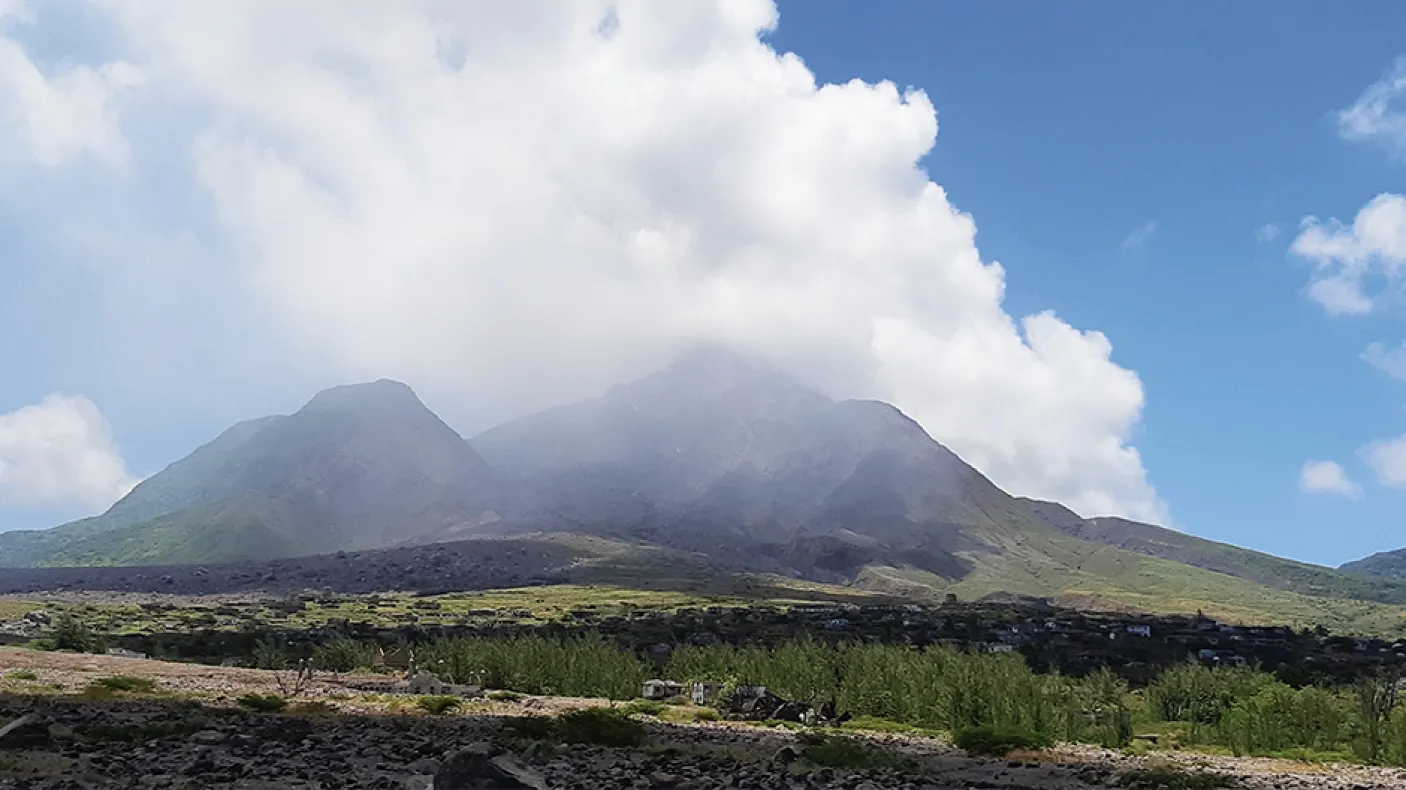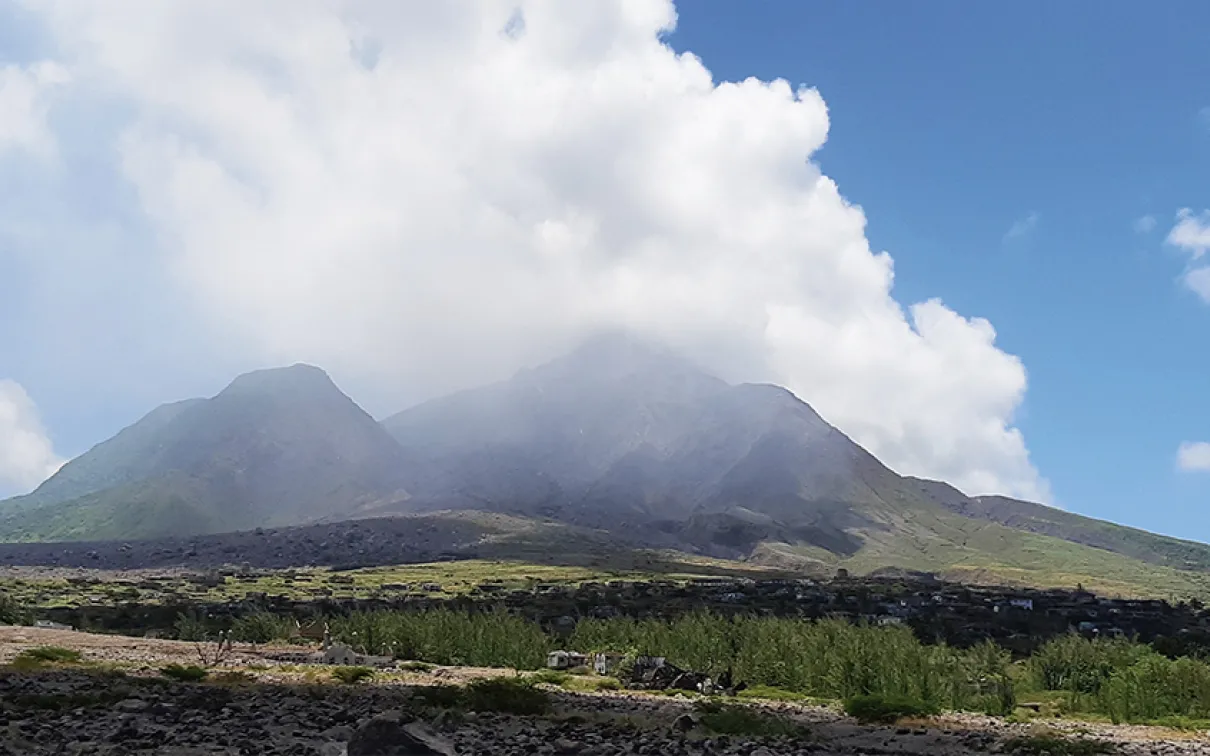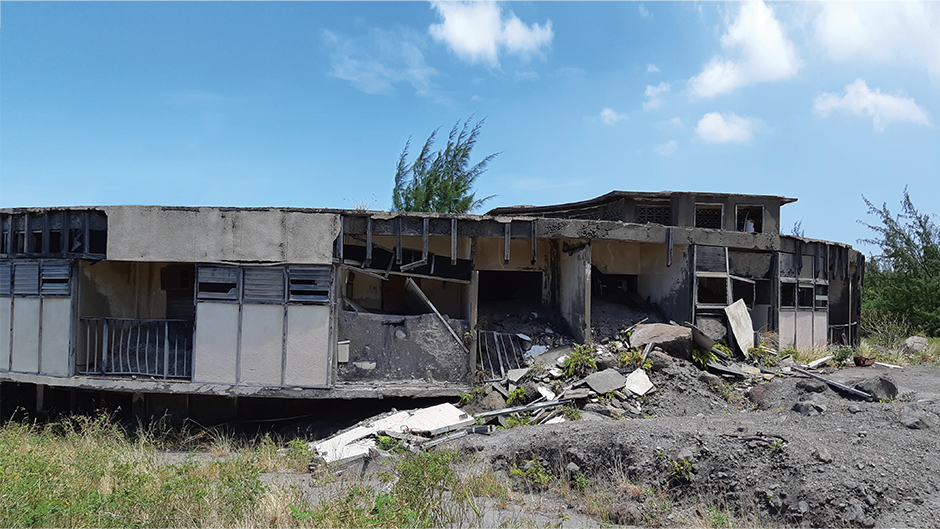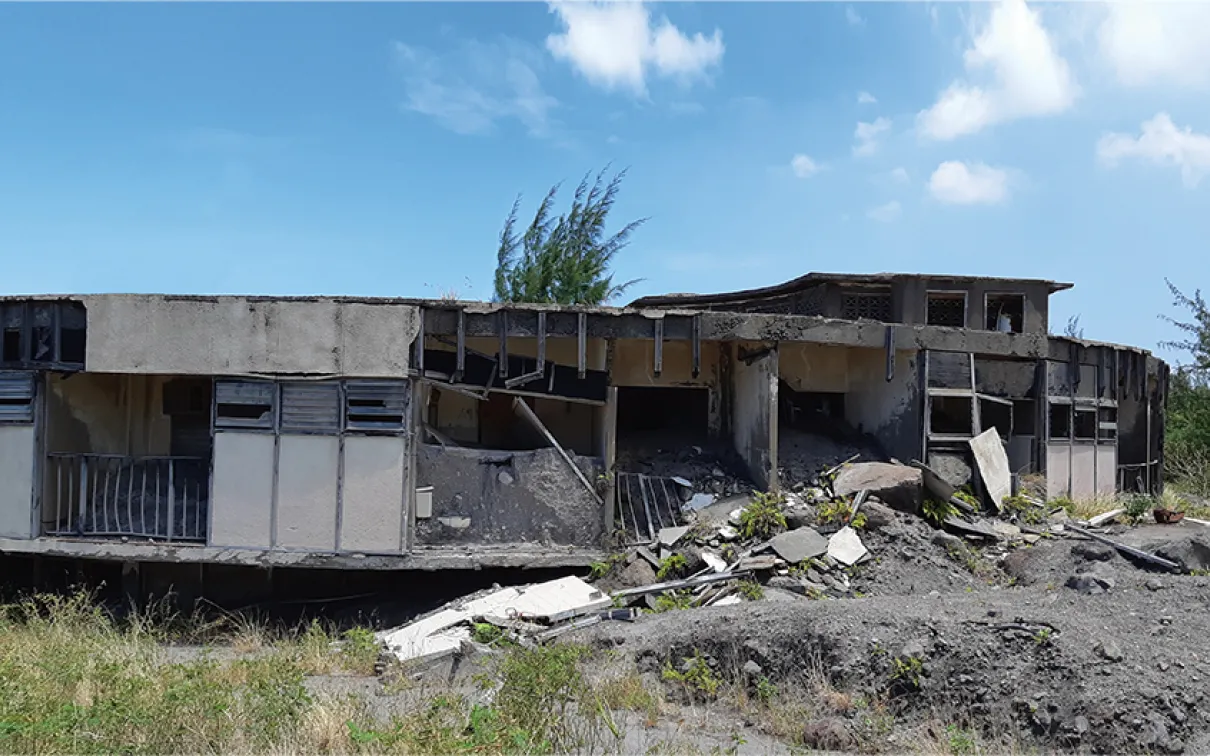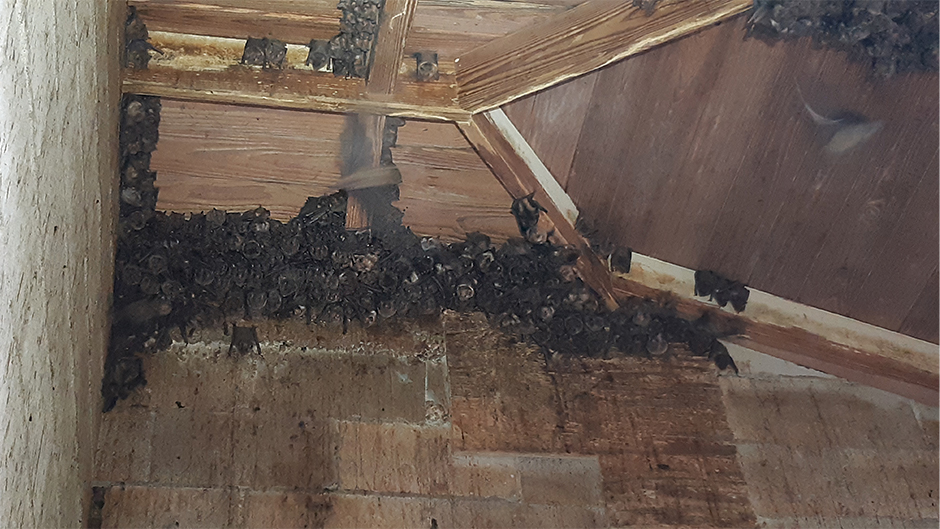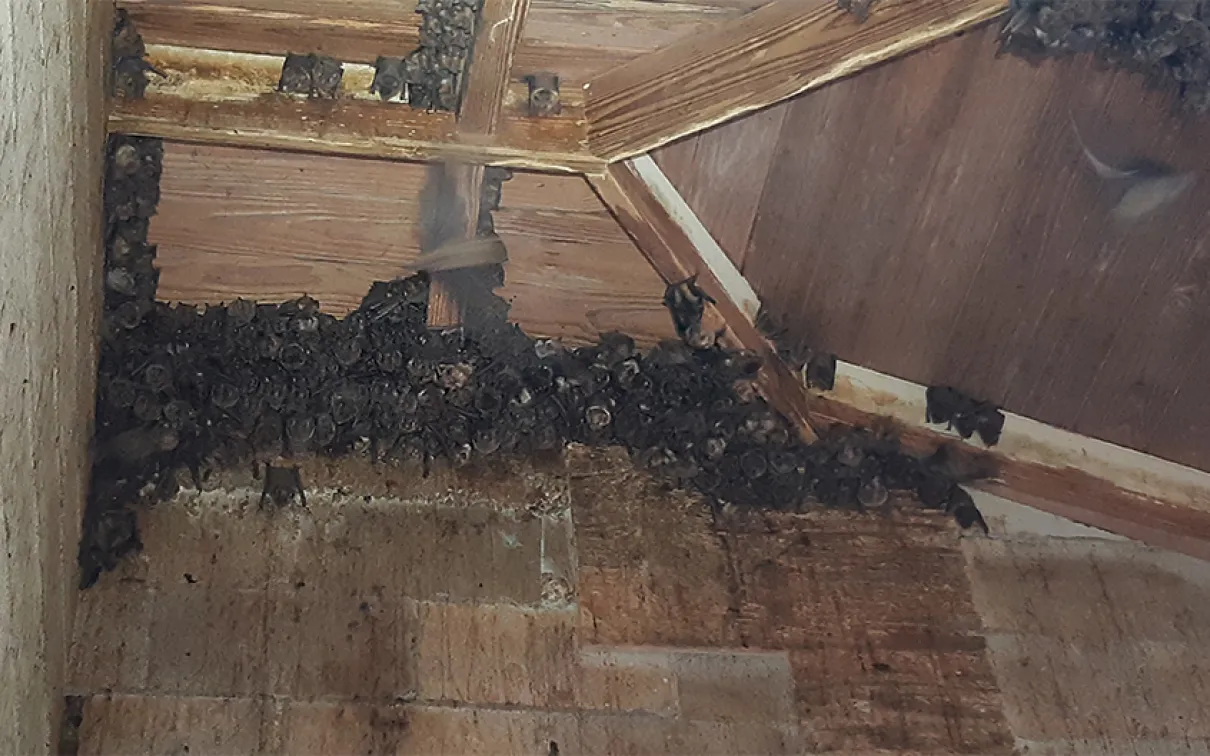Paradise Lost
Proximity to the Soufrière Hills volcano has had a dramatic impact on the bats of Montserrat
The Caribbean may conjure up images of sun
The Caribbean may conjure up images of sun, sand, and tropical getaways, but this seeming paradise exists under the constant threat of natural disasters such as hurricanes, earthquakes, and volcanoes.
This is certainly the story in Montserrat—aka the “Emerald Isle”—where Beatles producer Sir George Martin opened an AIR Studios facility for artists including The Police and Dire Straits to record in the late 1970s and 1980s. The studio was destroyed by Hurricane Hugo in 1989, and the island was still recovering when the long-dormant Soufrière Hills volcano erupted in 1995. The volcano’s fifth and most recent phase of activity occurred in 2010, leaving the southern part of the country—including capital city Plymouth—covered in lava and ash.
In addition to the devastating human toll—half the population of 10,000 left the country, most settling in Britain—the southern part of the island remains an ecological wasteland designated as an exclusion zone with restricted access. But I was there in May 2019 as part of a four-person biodiversity survey team that also included South Dakota State University’s Dr. Scott Pedersen, who has been conducting fieldwork on the island since 1994.
Bats are the only mammals native to Montserrat, and Pedersen has seen the effects of volcanic activity on the fauna and flora over the past quarter century. We observed a few fruit-eating bats in three species with combinations of teeth worn down to nubs and splotchy hair loss on their
bodies. These are sublethal pathologies rarely seen in healthy populations, attributable to physiological stresses associated with ingesting ash-covered fruit.
Volcanic activity also caused the loss of bats’ natural habitats—such as forests and caves for roosting and feeding—that were incinerated or buried in the ash and lava debris. There are, however, some suitable places for bats to live in the intact north. We estimated about 5,000 Antillean fruit-eating bats (Brachyphylla cavernarum) in the largest-known cave and maternity roost in Montserrat, which is consistent with previous counts. However, an adjacent cave normally occupied by males was empty.
Gallery 1
A few days earlier
A few days earlier, along with officials from the Department of the Environment, we surveyed for bat roosts in the old Lee’s neighbourhood in the evacuation zone west of the volcano. A bachelor roost of Antillean fruit-eating bats was found in an abandoned house previously occupied in 2009 and 2011 by smaller insectivorous free-tailed bats (Tadarida brasiliensis). The plan was to attach radio transmitters to some of the bats to track where they fly to forage for food and to roost, but scheduling conflicts reduced our expedition team and we are hoping to try this during a follow-up trip next year.
Three species of fruit-eating bats had combinations of teeth worn down to nubs and splotchy hair loss on their bodies
Although no eruptions have occurred in nearly 10 years
Although no eruptions have occurred in nearly 10 years and the official Hazard Level has remained low at Level 1 for the past five years, sulphuric gases are being emitted, and slow ground deformation is ongoing. This indicates that the volcano still has a pressurized magma system that has the possibility of renewed activity. The Soufrière Hills volcano is far from being dormant, but is not considered an imminent threat.
This lull in activity allows scientists to study the effects of volcanoes on island ecosystems such as Montserrat, which still harbours natural habitats adjacent to the scarred landscape caused by the recent eruptions. Bats are important seed dispersers and flower pollinators, so they will be important contributors to the reappearance of forests in the southern part of the island.
Burton Lim
Burton Lim is Assistant Curator in the Mammalogy Department.
For more, visit Bloodsuckers: Legends to Leeches, on view at the ROM until March 22, 2020.

